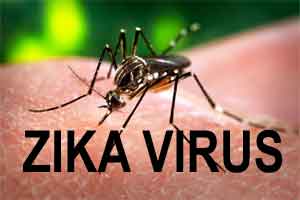- Home
- Editorial
- News
- Practice Guidelines
- Anesthesiology Guidelines
- Cancer Guidelines
- Cardiac Sciences Guidelines
- Critical Care Guidelines
- Dentistry Guidelines
- Dermatology Guidelines
- Diabetes and Endo Guidelines
- Diagnostics Guidelines
- ENT Guidelines
- Featured Practice Guidelines
- Gastroenterology Guidelines
- Geriatrics Guidelines
- Medicine Guidelines
- Nephrology Guidelines
- Neurosciences Guidelines
- Obs and Gynae Guidelines
- Ophthalmology Guidelines
- Orthopaedics Guidelines
- Paediatrics Guidelines
- Psychiatry Guidelines
- Pulmonology Guidelines
- Radiology Guidelines
- Surgery Guidelines
- Urology Guidelines
Scientists uncover how Zika virus causes microcephaly

A multidisciplinary team from The University of Texas Medical Branch at Galveston has uncovered the mechanisms that the Zika virus uses to alter brain development. These findings are detailed in Stem Cell Reports.
There are currently 70 countries and territories reporting active Zika transmission, according to the World Health Organization. While a Zika infection typically results in mild or symptom-free infections in healthy adults and children, the risk of microcephaly in the developing fetus is an alarming consequence that has created a worldwide health threat.
Babies with microcephaly can have a wide array of problems including a small brain and head, developmental delays, seizures, vision and hearing loss and feeding difficulty. Scientists are trying to determine how a Zika infection triggers these defects.
Since a normal brain develops from simple cells called stem cells that are able to develop into any one of various kinds of cells, the UTMB team deduced that microcephaly is most likely linked with abnormal function of these cells.
There are two main lineages of the virus, African and Asian. Recently, the UTMB team found that only the Asian lineage has been linked with microcephaly. So, what is it about this particular form of the virus that inflicts such damage?
The researchers established a method of investigating how Zika alters the production, survival and maturation of brain stem cells using cells donated from three human fetal brains. They focused on the impact of the Asian lineage Zika virus that was involved in the first outbreak in North America in late 2015.
"We discovered that the Asian lineage Zika virus halted the proliferation of brain stem cells and hindered their ability to develop into brain nerve cells," said Ping Wu, senior author on the study and UTMB professor in the Department of Neuroscience & Cell Biology. "However, the effect that the Zika virus had on the ability of stem cells to develop into specialized cells differed between donors. This difference seems to be linked with a Zika-induced change in global gene expression pattern, it remains to be seen which genes are responsible.
Wu further stated, "the unique system containing stem cells from three donors will allow us to dissect molecular mechanisms underlying Zika virus-induced brain malformation."
Senior author and UTMB associate professor in the Department of Pathology Nikos Vasilakis said that they discovered that two weeks after the cells had developed into a certain type, the Zika infection was mainly found in glial cells, which provide support and insulation for the brain.

Disclaimer: This site is primarily intended for healthcare professionals. Any content/information on this website does not replace the advice of medical and/or health professionals and should not be construed as medical/diagnostic advice/endorsement or prescription. Use of this site is subject to our terms of use, privacy policy, advertisement policy. © 2020 Minerva Medical Treatment Pvt Ltd